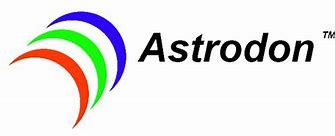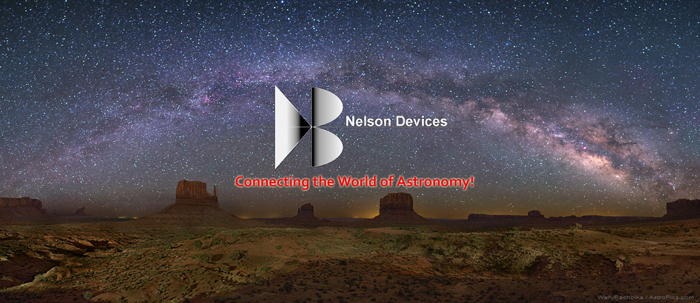ASTRODON SPECIAL FILTERS

Astrodon ExoPlanet Light Curve Filters
Description
Astrodon introduced the ExoPlanet-BB filter for use in amateur-scale telescopes to measure the light curves of exoplanets.
Astrodon introduced the ExoPlanet-BB filter for use in amateur-scale telescopes to measure light curves of exoplanets.
Although it may not seem possible at first, astronomers with typical backyard equipment and sensitive CCD cameras have the capability to quantitatively measure small changes in light intensity as large exoplanets pass in front of their suns.
Picture
Based upon the extensive work of Bruce Gary in his book, "Exoplanet Observing for Amateurs", Chapter 7 concludes that a "clear with blue-blocking filter should be the amateur's default choice for exoplanets".
The Astrodon ExoPlanet-BB filter is that filter, where BB stands for "blue blocking". He concluded that this filter "has most of the high signal-to-noise advantages associated with unfiltered observing, yet it has most of the reduced systematics advantages associated with V-band and R-band observing.He recommended this filter for transiting exoplanets, or BTEs (those brighter than 10th magnitude assuming a telescope <16 inches in diameter). The rewards for using the CBB filter are that reference stars that are a different color from the target star won't produce annoying air mass curvatures in the light curve. Also, most moonlight is blocked by the CBB filter, leading to greater SNR. Finally, observations with the CBB filter exhibit lower atmospheric extinction. For an average star, the CCB filter will have a magnitude penalty of about 0.11 compared to a colorless (clear) filter.
Picture
The spectrum of the Astrodon ExoPlanet-BB filter is shown at left. It blocks UV and blue light. It starts transmitting light near 500 nm, corresponding to the shape of the conventional V-band filter and continues to transmit light into the near-infrared.
Bruce Gary also states that a "near-infrared filter should be used when observations at low elevations are necessary or when a nearly full moon is above the horizon". He specifically mentioned the Astrodon NIR Luminance filter which starts transmitting at 700 nm into the near-infrared.
The filter is 3 mm thick and is thus the same thickness as all Astrodon LRGB, narrowband, NIR and photometric filters for minimal refocusing. It has anti-reflective coatings on both sides.
Standard sizes are 1.25", 31mm, 50mm round, and 50mm square. The 1.25" is 27.5 mm of filter glass mounted in a 1.25" filter cell. The 31mm is 27.5mm of filter glass mounted in a 31mm ring.
Unlike other Astrodon filters, the Photometric filters (Johnson-Cousins and Sloan) do not come as 36mm of unmounted glass. For those who want 36mm round for use in a 36mm filter wheel, 27.5 mm of filter glass can be mounted in our 36mm adapter.
We also have a limited quantity of 12mm and 25mm (call for pricing and availability). All Astrodon Photometric filters are 100%-Coated for long-term durability and consistency of research with the highest throughput.
NOTE: In Astrodon part numbers we pronounce the ' character (apostrophe) as "prime" and the _ character (underscore) we pronounce as "sub." So u'2_27R should be read as "u prime 2 sub 27 R."
The Sloan Digital Sky Survery (SDSS) filters were designed by Fukugita et al. (Ast. J., 411/4, April 1996, p. 1748-1756) to include five mostly non-overlapping filters covering 300 nm to the sensitivity limit of silicon CCD cameras near 1100 nm. They combined colored glass filters and short-pass dielectric coatings to steepen the low wavelength side of the bandpass. The sky glow line at 557.7 nm occurs between the g' and r' filters, and thus is reduced.
The SDSS photometric system is the most common filter set used today. The Hubble Space Telescope is equipped with an SDSS set that provides a large reference database for research. Much of photometry up to magnitude 23 will be done in this system with meter-class telescopes. The upcoming large collaborative survey projects (Large Synoptic Survey Telescope - LSST; Panoramic Survey Telescope and Rapid Response System - Pan-Starrs) will also use SDSS filters.
Astrodon Photometrics Sloan Filters have evolved to our current Generation 2 filters with technical input from Las Cumbres Observatory Global Telescope Network (LCOGT) and others. Additional separation was included between the g' and r' filters to better avoid atmospheric sky glow . In particular the Y and z_s near-infrared filters were added to ensure that the filter, and not the detector, controlled the high-wavelength cut-off. This in contrast to our z' filter, which is simply a cut-on, or long-pass filter. Lastly, out-of-band blocking was tightened from an average to absolute specification to further minimize the already small leakage. A summary of the 50% points is provided in the chart Left.
Astrodon Photometrics Sloan Filters
$500.00 Plus S/H
CONTACT US
Nelson Devices LLC
1979 Chub Lake Rd
Roxboro, NC 27574
919-561-0192


©2022 NelsonDevices, LLC. All Rights Reserved.



